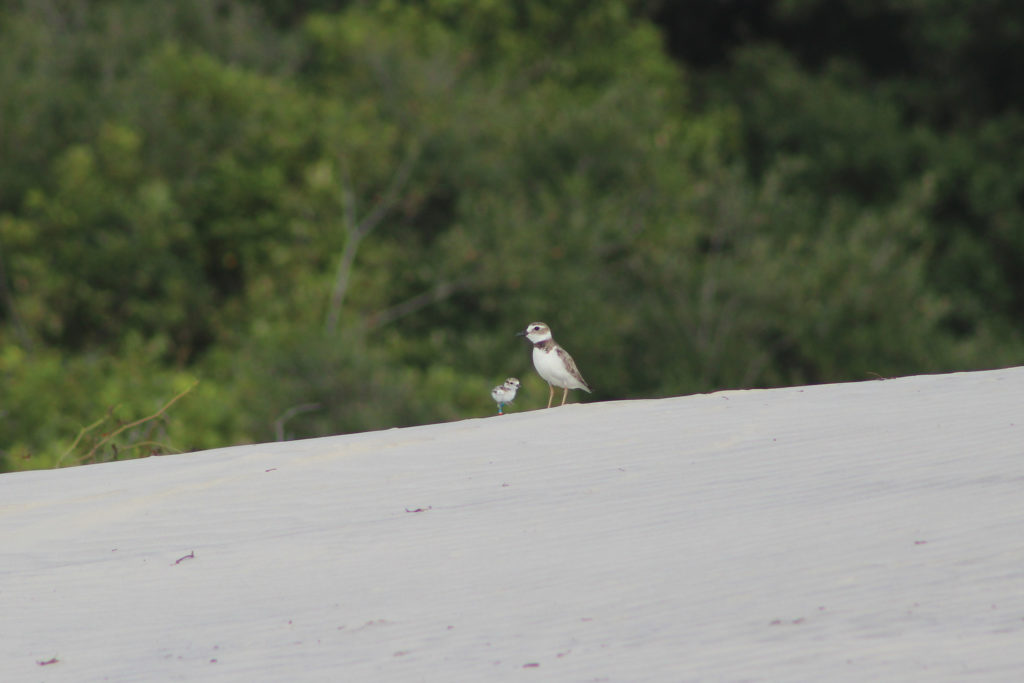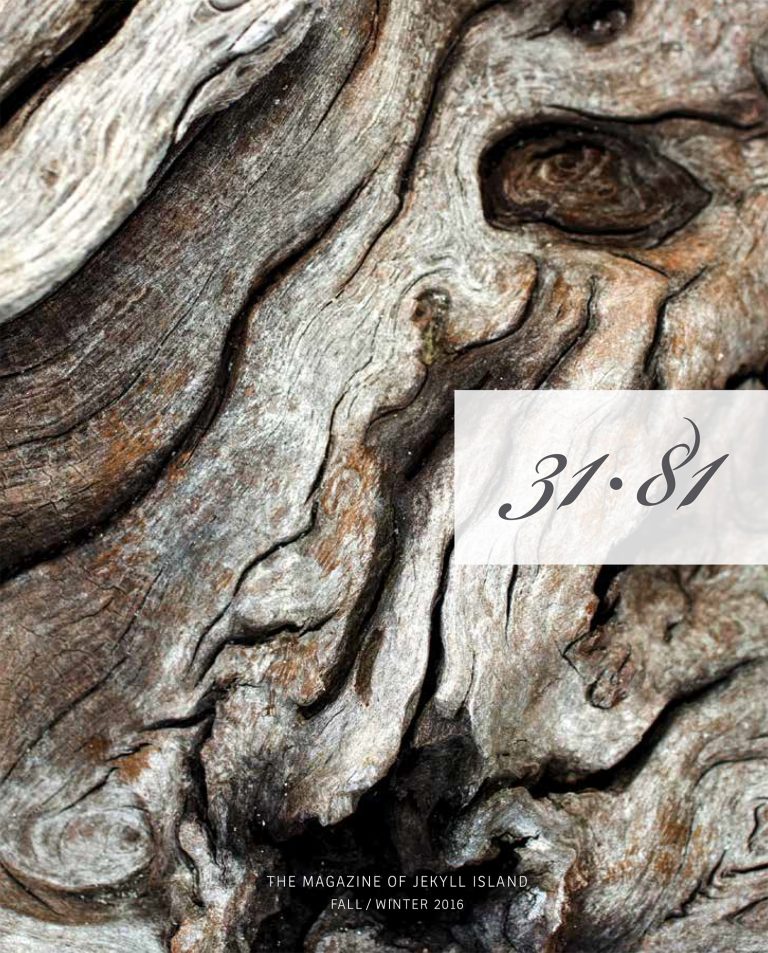A team of conservationists is working to build a safe habitat for a threatened shorebird. But the little Wilson’s plover must do the rest.
At 8 a.m. on a Monday in early July, south dunes beach is quiet and clean. any trace of weekend sunbathers, swimmers, and sand-castle builders has been erased by volunteers with trash bags and the receding tide, which whispers in the distance.
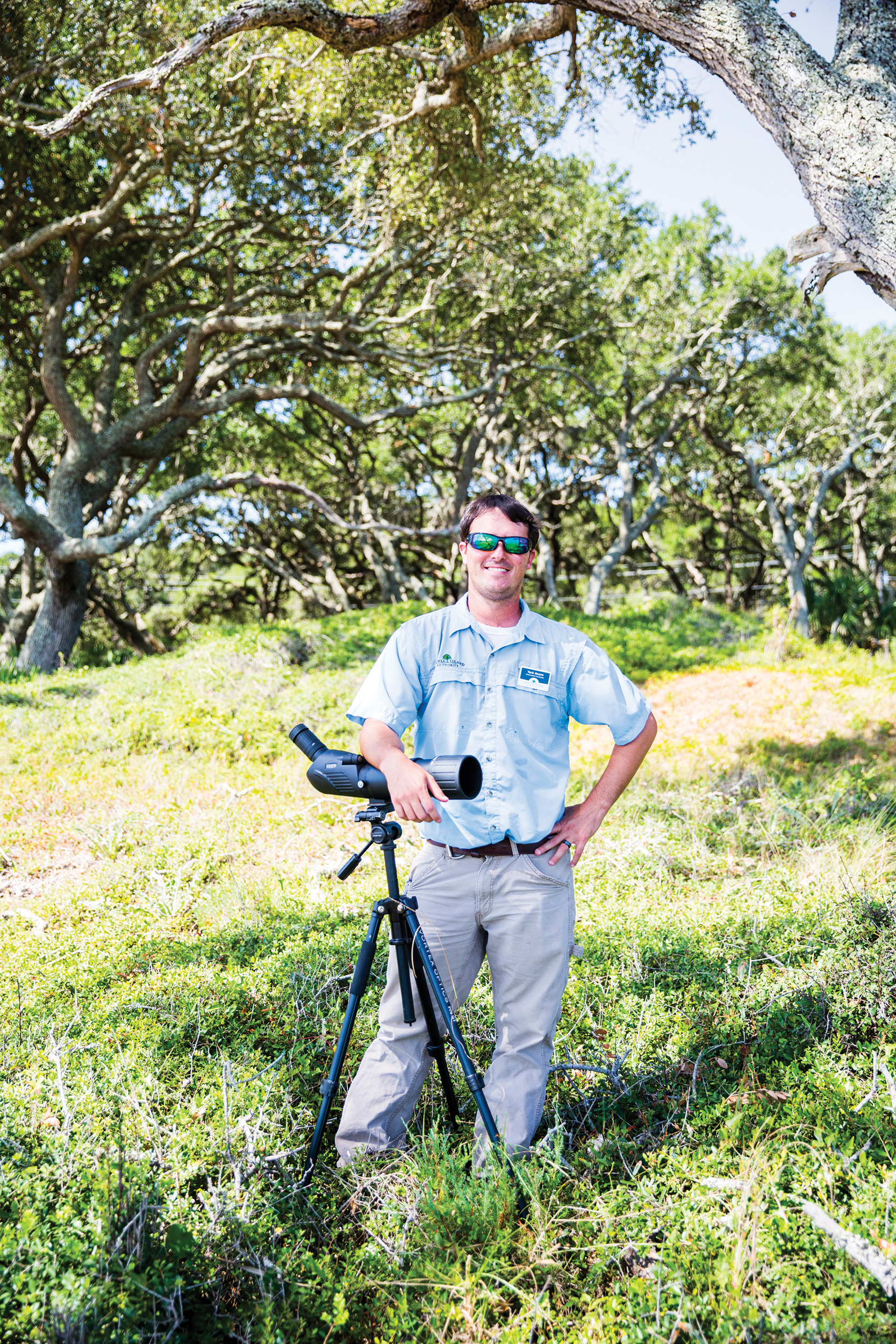
The wiped slate of white sand is exactly what Guy “Yank” Moore needs. He’s a third-generation Jekyll native and now a conservation coordinator for the Jekyll Island Authority (JIA) making his weekly morning rounds, combing the beach for tracks. Beneath the bill of a baseball cap, through wraparound sunglasses, Moore can plainly see the tire marks of a Georgia Sea Turtle Center research vehicle and the delicate stab-and-drag patterns of the sideways-skittering ghost crabs, whose burrows dot the ground. But the traces he seeks are distinct—the tiny three-toed footprints of a shorebird called the Wilson’s plover.
The fact that after twenty minutes Moore sees no such tracks is precisely the reason he’s looking. Worldwide, this medium-sized plover has an estimated population of just 8,600 birds. They nest along the Gulf of Mexico and down the Atlantic Coast from Virginia to Florida, with migration routes along both coasts of South America. Since the 1960s, their numbers have dropped sharply across the country. The state of Georgia has legally declared the Wilson’s plover a threatened species, with some 359 pairs concentrated mainly on Little St. Simons and Cumberland islands. But in 2015, Moore and his compatriots at the JIA joined with the Jekyll Island Foundation to take part in Operation Plover Patrol, with an aim to ensure the birds a safe haven here.
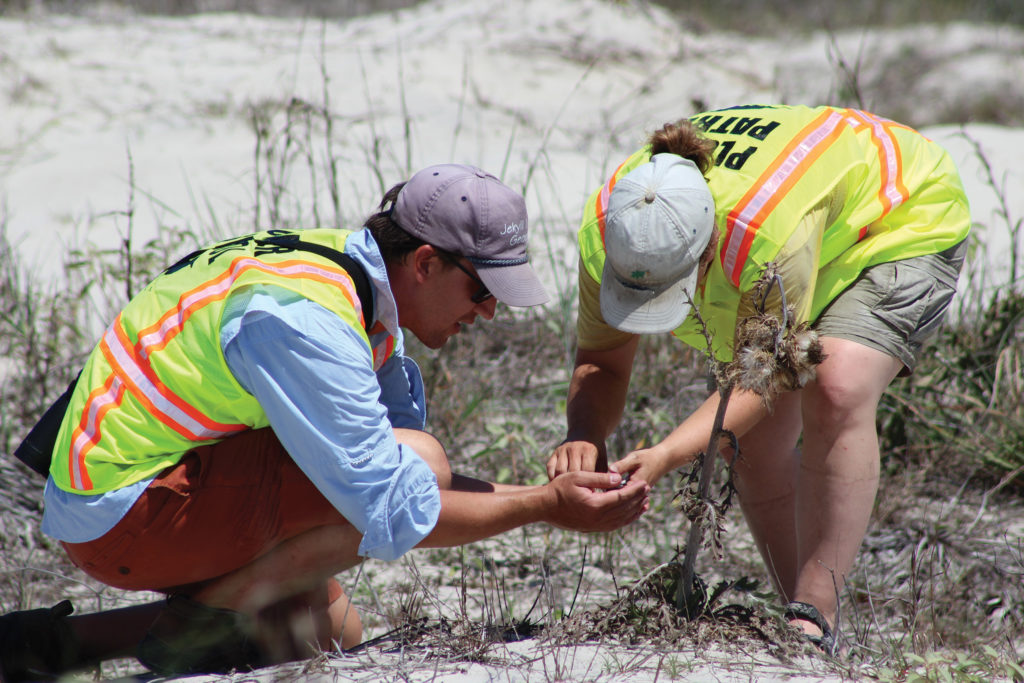
The plovers typically arrive in late March and start nesting toward the end of April. This year, Moore has documented sixteen nests along this stretch of beach. Still, the birds and eggs are so small, he could’ve easily missed one. That’s why he continues to listen for the distinctive call—a sharp, whistled “weep!”—and to look for tracks that might lead from the beach where plovers forage up to where they lay their eggs in the dunes: above the sweeping tide, but below the heavy vegetation where predators like snakes and opossums lurk.
Of course, it’s not the plover’s natural predators that have brought the species to the brink of being endangered. Moore and Co. have installed a yellow-rope barrier at the foot of these dunes running between posted signs that read: Please Keep Out: Wilson’s Plover Nesting Area, beneath a picture of the animal. Over recent decades, the plover has lost much of its habitat to beachfront development, and humans, their vehicles, and their pets—particularly dogs—have been known to destroy nests. “These beaches are packed on Saturdays and Sundays,” says Moore. “Occasionally we still get people walking behind the barriers.”
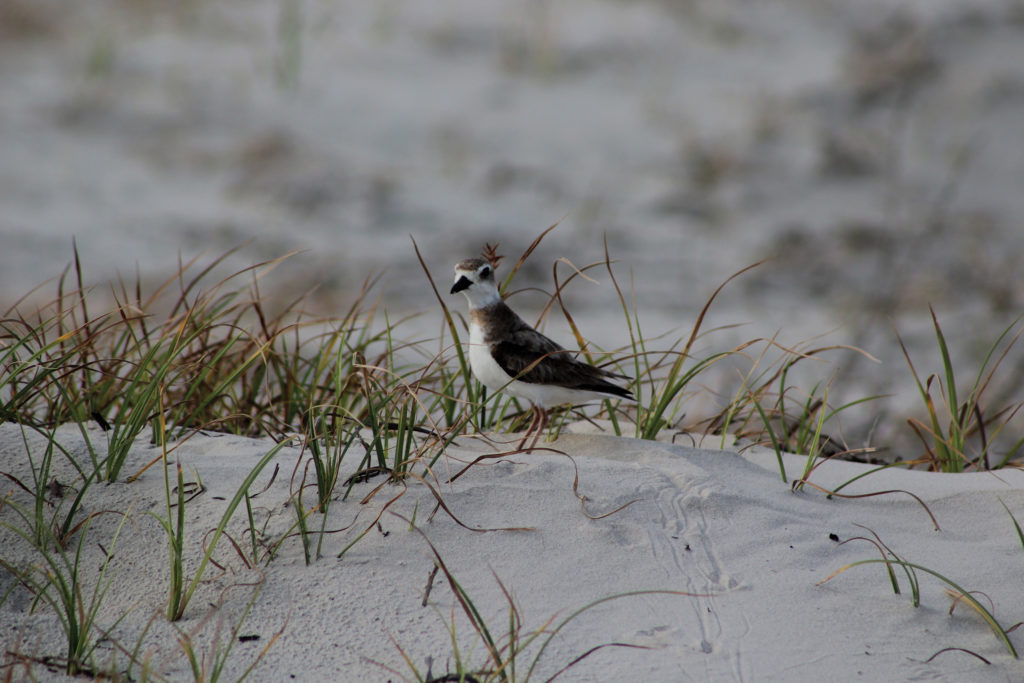
Of the sixteen nests Moore has identified along this stretch of Jekyll coastline this year, only six weren’t looted by crabs or devoured by opossums and actually hatched. And none of them survived to fledge, or become capable of flight. Plover breeding usually tapers off in late June, so as of this morning, almost all of the season’s surviving eggs have hatched. But there is still one active nest Moore knows of a few clicks up the coast on Great Dunes Beach. Those eggs are Moore’s—and the Jekyll plovers’—last hope for 2016.
Operation plover patrol was built on the passion and research of Lydia Thompson, a local naturalist, artist, and educator who lived in Atlanta and paid monthly visits to Jekyll in the late 1970s and early 1980s to watch the shorebirds, which were plentiful. “When I moved down here in the mid-1980s, there were much fewer birds,” she says. “And there were no Wilson’s plovers nesting here.”
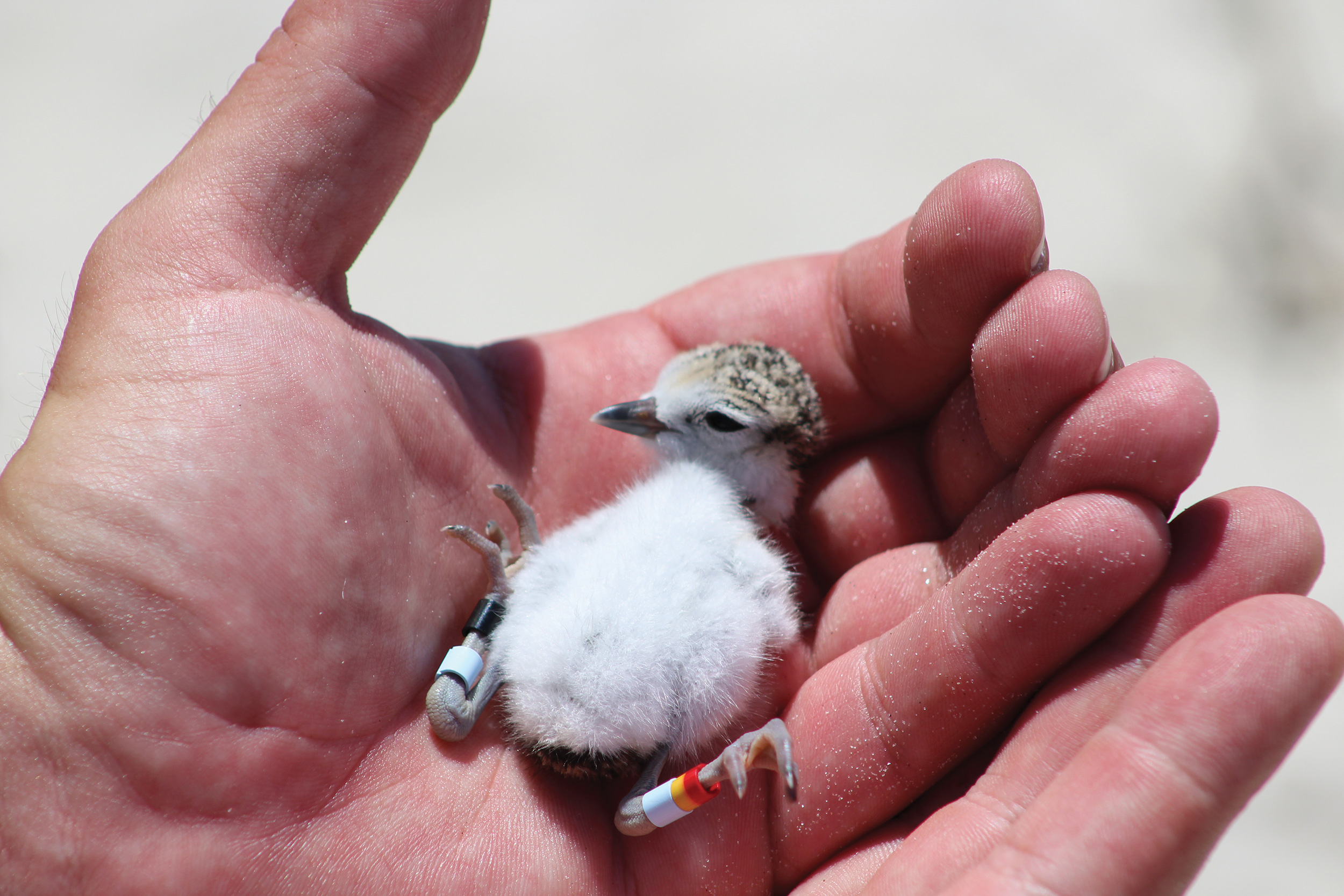
Thompson is a member of the Coastal Georgia Audubon Society and has led bird-watching tours up and down the coast since relocating here. She founded Operation Plover Patrol in 2007, but it wasn’t until the spring of 2015 that the JIA got involved. Moore, Thompson, and JIA director of conservation Ben Carswell set up a comprehensive monitoring program intended to help the observers better understand the plovers’ relationship to the Jekyll coast. They began weekly surveys, following the tracks and watching adult bird behavior to try to locate the hidden nests. “The plovers aren’t big, but they’re very smart,” says Moore. “They will try to distract predators and lead them away from the nest.” Once the scientists located a nest, they set up a hidden camera in the dunes. With infrared capabilities, the cameras watched through day and night, recording any predation or disturbance that might endanger the eggs.
That first year, fifteen nests were located and from them, eleven chicks hatched. The next step was to catch and band the chicks with a unique color combination so the JIA could track them and determine if plovers return to Jekyll to raise their own young or if they move to nearby islands. Observers managed to catch and band nine of the eleven hatchlings. But only six of those eleven survived to fledge. One banded chick showed up in northeastern Florida.
It’s impossible to know for certain what happened to the others. While the cameras did record instances of opossum, ghost crab, and snake predation, the rest remain unaccounted for. As Moore points out, the young leave the nest almost immediately to forage on the wet beach. Once they’ve left, the cameras can no longer record their fate.
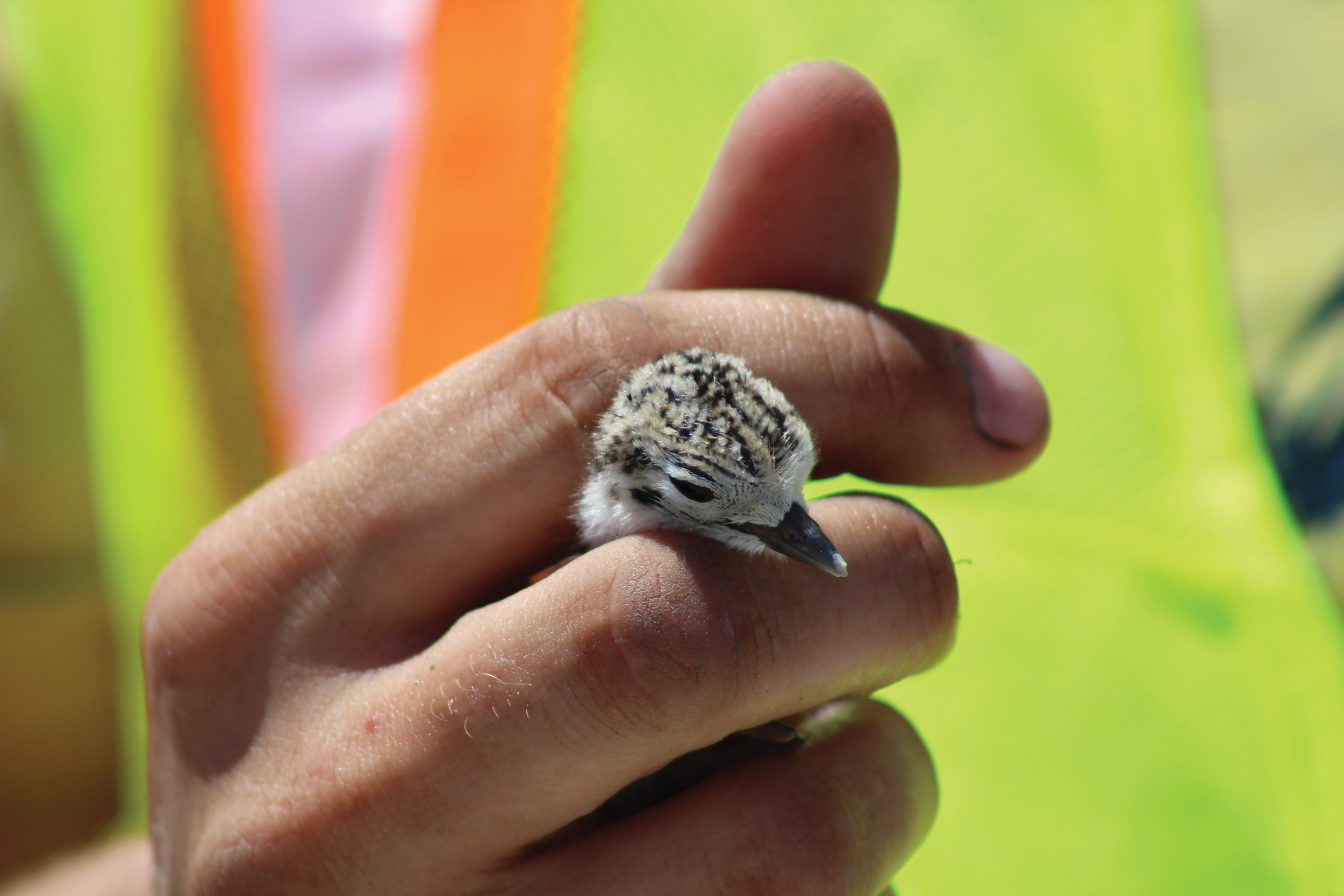
Moore says there is a new player on the scene this year—a bobcat that was spotted crossing the bridge and prowling Jekyll. The cameras have never caught the feline in the act of pilfering a nest. Nor have they captured a dog or its human in the act.
And as long as the disturbances are all at least presumably caused by natural predators, there’s nothing Moore can really do. Even though it’s easy to root for the island’s little winged underdog, the JIA’s conservation team and their cameras are there strictly in an observational capacity. “We’re here to see if there’s anything we could do,” says Moore. “We have to let nature take its course.”
On great dunes beach, Moore checks on the last unhatched eggs. even though he has visited once a week for the past few months, the small and deftly camouflaged nest can be hard to pinpoint on the ever-shifting dunes. Fortunately, he quickly spots the telltale footprints, little upside-down T’s on the shore. And sure enough, not far away stands an adult plover.
No more than eight inches in height, the bird’s head, back, and wings are a dusty brown, only slightly darker than the sand. Its breast is white with a black band around its neck, indicating this is a male. Both mother and father stay near the nest to protect their eggs until they hatch. This wary poppa is creating a bit of spectacle as he chirps and hops away from the dunes, toward the lapping waves, trying to distract Moore and lead him on a wild plover chase.
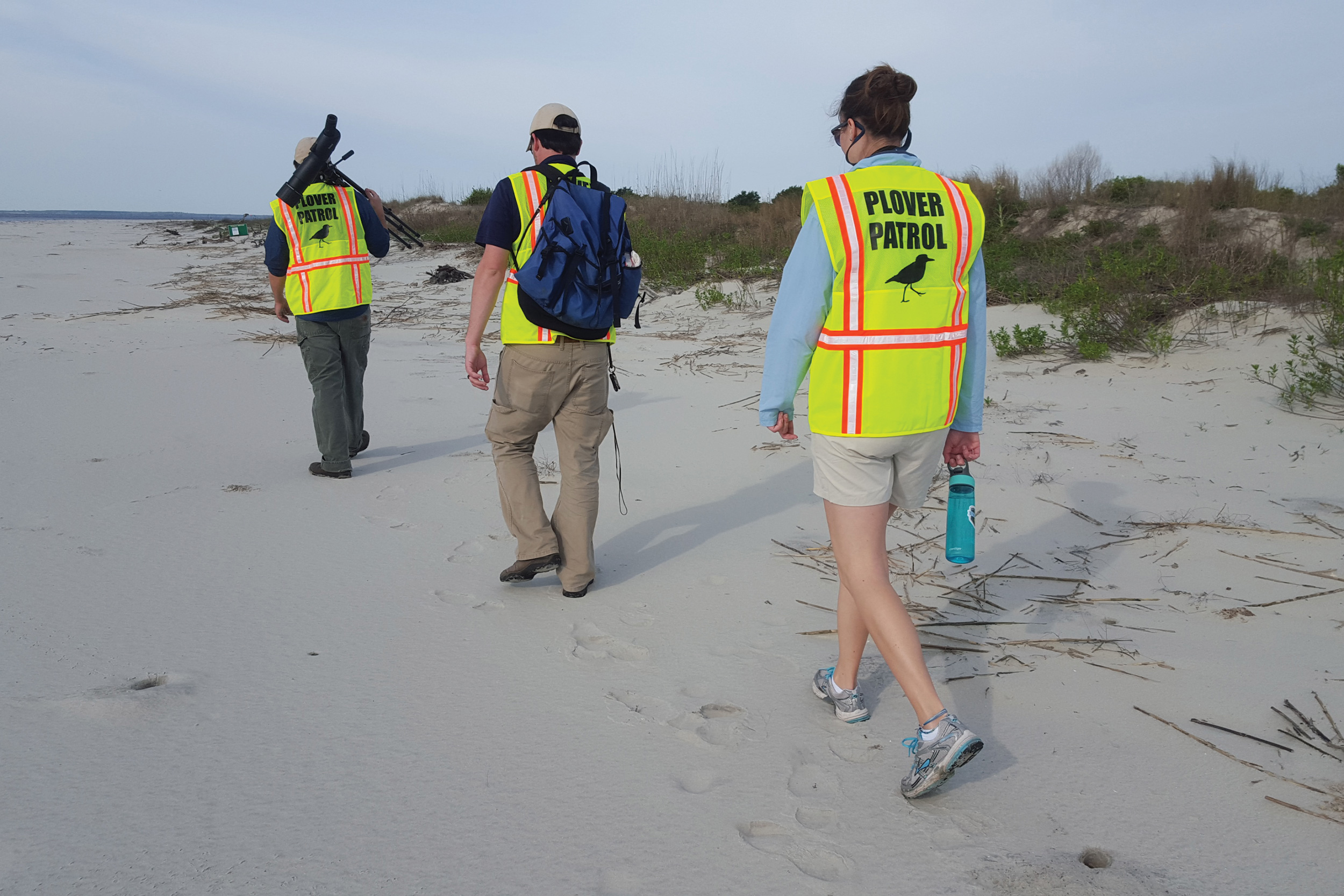
Moore carefully follows the tracks up into the dunes, where he finds a golf club–sized divot in the wide-open sand containing three brown-and-black speckled eggs the size of gumballs. It’s easy to see how someone or something could step on them without even knowing. For the moment, they are safe. Moore knows they could hatch any day, but there’s no need to further alarm the father. Besides, the camera is there, planted in the side of an adjacent dune to record the future of this family—potentially the only new plover family on Jekyll Island this year.
Days later, Moore sees footage of the eggs hatching. Unfortunately, none of them will fledge. Not having any survivors this year doesn’t necessarily indicate failure or success for the effort. Moore says two years is still too early to render a verdict, noting the apparent increase in the number of nesting Wilson’s plovers since Thompson began her work years ago. Thompson says the program has made an impact simply by raising awareness among residents and human visitors. “We’re making them aware that the birds are out there,” she says. “We make them realize that the beach is alive.”
